Renovation will play a vital role in meeting the government’s target of an 80% emissions reduction by 2050. And it’s the owner occupier who’ll be doing the work. Two south London residents found out what it takes
Chris Mead and Jay Hayter are perfectly ordinary people. He’s a financial analyst and she’s an IT project manager, and neither of them had a clue about construction until recently. But this couple are key to the government’s ambition to cut carbon emissions from buildings. Why? They decided to sink their hard-earned cash into transforming their run-down, three-bedroom Victorian house in London’s Elephant & Castle into a very low energy home - the sort the government desperately needs more of if it is to hit its new target of reducing carbon emissions by 80% by 2050.
The government is at last acknowledging the key role the existing stock plays in reducing carbon emissions, and its recently published Heat and Energy Saving Strategy consultation calls for emissions from all buildings to be approaching zero by 2050, and all homes to have received a whole-house package of energy-saving measures by 2030. The reason Mead and Hayter are vitally important to the country’s energy-efficient future is that over 70% of homes in the UK are owner-occupied and getting those owners to improve their homes is the only way the government will hit its targets.
Like many home improvers, Mead and Hayter didn’t have the budget to pay for an army of professionals to work out the best way to make their home energy-efficient. And like most people, they wanted the end result to be easy to live with. “The key thing we wanted to achieve was to upgrade the energy efficiency of the house without making too many sacrifices,” says Mead. “We didn’t want to be eco-warriors living in a homespun eco-house, rather we wanted it to be an eco-house that was suitable for 21st century living.” Mead and Hayter’s experience holds valuable lessons for government and industry. So how did they manage?
First steps
The couple didn’t have any specific energy reduction targets in mind; they simply wanted to make the house as low energy as possible. As neither of them had any experience of eco-renovation, they had to start from scratch, although Hayter’s project management skills came in handy when it came to planning the job.
The first step was to research where to start. “It was all new, like going back to school,” says Hayter. The first hurdle was the lack of a single source of reliable information to help so the couple spent two months going to trade shows, trawling the internet for information and even making the pilgrimage up to the Centre for Alternative Technology in north Wales. “There is no one place you can go to for practical advice for renovators to pull all this together and understand the differences between products and what the technologies are,” sighs Mead.
Insulation
We wanted to upgrade the energy efficiency of the house without making too many sacrifices
Chris Mead
Armed with all the information they gathered, the couple were ready to start making decisions. They began by tackling the more obvious stuff, like insulation – they have used a high-performance, 65mm thick, phenolic foam-backed plasterboard to line the external walls of the building. This has been applied to the inside of the walls as the home is built from London stock bricks and external insulation would ruin the traditional appearance of the home. The insulation reduces the U-value of the walls from 2.5W/m2K down to a very respectable 0.35W/m2K. Mead sourced the insulation board from a salvage yard and paid just £15 for a 1.2m x 2.4m sheet rather than £60 for a new sheet. Internal insulation can affect traditional features like cornicing as it makes the walls thicker but this wasn’t a problem as most of the cornice in the home was missing apart from the dining room on the ground floor. The roof space was insulated with 270mm of sheep’s wool and a multifoil insulation product has been used where the roof dips down into the centre of the house where the central valley gutter is located.
Heating
The biggest decision faced by the couple was how to heat their home. After much debate they decided against a standard gas condensing boiler and went for an air source heat pump instead. “It was one of the biggest changes we made,” explains Hayter. “We went to numerous trade shows and asked manufacturers about the pros and cons of boilers and heat pumps and went for the pump.” It was a much more expensive choice; the heat pump is coupled with two solar thermal panels with a total cost of £9,000 rather than £3,000 for a gas boiler. But Mead and Hayter chose this system as its efficiency appealed to them – it extracts 2.9 units of heat for each unit of electricity needed to run the pump. The electricity can be provided from renewable energy via a green tariff, unlike fossil fuel gas, and the couple calculated it had an 11-year payback period. They also reckon the system will add value to the home.
The couple worked out how to make the system as efficient as possible themselves. Heating system configuration and outputs are normally handled by installers but Hayter and Mead felt they could do a better job. “It’s the one area where we had to do the most research. We had to calculate our energy usage, as the system had to be optimised for our particular energy needs,” explains Hayter. “The installers have their own software but only we knew how we were going to use the house and didn’t want to rely on someone else’s view of how it should be set up.” The heat pump has an output of 14kW and is coupled to low water content radiators. These have to be bigger than conventional radiators as the heat pump works more efficiently when the heating water is at a lower temperature than is produced by a conventional boiler. Ultimately, the couple want to install a wood burning stove in the living room to minimise use of the heating system.
Water
Cutting down water use was also a priority. Mead and Hayter wanted to install a rainwater harvesting tank under the rear garden but initially this didn’t seem possible. They made up a wooden frame to mimic the proportions of the 2,700 litre tank which is supplied in two halves but found it wouldn’t go through either the door or front window and even if they got it into the house they would not have been able to get it into the garden through the back of the house. Undeterred, they talked to neighbours and found one four doors down that had easier access to the rear of the homes. The tank was carried over neighbouring garden walls and into the couple’s rear garden. This provides 48% of the couple’s water needs including toilet flushing, the washing machine and garden irrigation and has a two-year payback period.
Windows and more
Heating is the area where we had to do most research. The system had to be optimised for our particular needs
Jay Hayter
Elsewhere, the original single-glazed windows are being draught-proofed. Mead didn’t want to replace the windows with double-glazed units. “We would rather keep what we have and renovate it because of the embodied energy in the windows,” he explains. All the heating pipes have been lagged, low-energy lights fitted and eco-paints used for decoration. Hayter found choosing the type of paint particularly difficult. “The eco-paint industry is very backstabbing. I found they were very ready to rubbish other people’s claims,” she says. “And that’s a problem, because if you are doing an eco-renovation you do tend to rely on the claims made by manufacturers,” chips in Mead.
One popular green bolt-on the couple decided against was photovoltaic panels. “We didn’t go for PV because of the state of the technology and the long payback period, but we would consider it in the future,” explains Mead. “It’s a balance between reducing our carbon footprint and not going wildly over budget and trying to do everything at once.” They also decided against a mechanical ventilation system with heat recovery to cut down on energy use. “We looked at a Ubbink system but weren’t knocked out by it,” says Hayter. “We felt if you have that kind of system in a Victorian house it would be difficult to incorporate it without compromising the aesthetics.”
How did it go?
So, how easy was it to get the work done? Hayter used her project management skills to plan the work carefully and prepare a specification. “We spent a lot of time writing out the specification as it’s a bit out of the ordinary for the tradespeople,” she explains. “The scope of works also helped us understand what the job was about and it was very useful for the trades as it meant everyone was singing from the same hymn sheet.” They drew up shortlists of five tradespeople for each specialism which included the electrics, general plumbing, the heat pump and plastering, obtained quotes and followed up on references. “The guys we chose were really good and wanted to learn about it,” says Mead. “I think it was all within their existing skills, it was just a case of them applying their knowledge to a new technology.”
Mead has taken a year off work for this, and was able to do preparatory work such as lifting up the floorboards for wiring and plumbing. “Lifting the boards was a real knuckle-bruiser,” he smiles. All the M&E systems including the heat pump, hot water tank and solar panel controls have been shoehorned into an original tiny rear extension. “We have tried to maximise this space so there was a lot of co-ordination between the plumber, the electrician and all the other trades,” says Mead.
So are the couple pleased with progress so far? The answer is yes; the rainwater harvesting system is providing half of their water, the heating works satisfactorily despite the window draught-proofing not being finished, and the basement is currently unheated as work is still progressing there. They are also already getting all their hot water from the solar panels. “It’s a real success story for us,” says Mead.
So, what do they think would make the job easier?
“It would help to have a single place to get information. Something like a government-based internet site where homeowners can get practical advice on installing energy-reducing technology,” says Hayter, adding that the Energy Saving Trust’s website, which is meant to fulfil this role, is hard to navigate and the information it provides is too general. However, she does have a positive message. “Given that we’ve done it, anyone can do it,” she says. Given the monumental scale of the task facing the government, this is just as well.
Expert’s assessment
David Strong, chief executive of sustainability consultant Inbuilt, assesses Mead and Hayter’s efforts:
- I am very sympathetic to Mead and Hayter’s plight regarding where to get objective, reliable information. The Energy Saving Trust Best Practice Programme is geared up to helping builders, and the BRE and similar organisations are not interested in advising private householders – getting good advice is a real challenge and one that the government is going to have to address if it’s going to stand any chance of meetings its long-term CO2 reduction targets
- It’s great to see that they upgraded the wall insulation and that they had the gumption to get it cheap from a scrap yard at a quarter the price!
- I have grave concerns about the heat pump (ASHP). My preferred option would have been a wood-burning stove with a small gas condensing boiler (and oversized radiators) plus optimum start control (now available for about £50). The money they saved could have been used to install ground floor insulation or on improving the thermal performance of the windows by installing good-quality secondary glazing or replacing more of the windows with double glazing. This would have given a much higher carbon saving per pound invested than the heat pump. The pump is very unlikely to give them a seasonal CoP of 2.9 when energy requirements for de-icing are taken into account – the payback will be very long indeed and the carbon benefits are questionable (unless the grid gets more de-carbonised over the ASHP’s operational life).
I’m very concerned about the use of trellis around the heat pump and its position in the garden (in a corner between two walls) – this will promote short-circuiting which will make pump’s performance even worse!
Also, we strongly advise against the use of an ASHP to provide domestic hot water (since this will further reduce the seasonal COP) – it would be better to use off-peak electricity and an ultra-insulated pressurised hot water cylinder to top up the solar hot water system. It would be good to get the installation monitored as part of the EST trial, which is looking at the efficiencies of ASHP. - The use of rainwater harvesting is commendable – as was Mead and Hayter’s admirable tenacity in getting the tank installed!
- They made the correct decision not to install a mechanical ventilation with heat recovery (MVHR) system – it’s only worth fitting in draught-free homes with an air permeability of less than about 4m3/h/m2, which is very difficult to achieve in an old house like this one. At a test pressure of 50Pa the MVHR would have added to their energy usage.
Mead and Hayter’s shopping trolley
Windows
One window at the rear of house was replaced with a 24mm double-glazed low-E sash window. The rest of the windows will be renovated. The single glazing will be retained to maintain the character of the home; a combination of thick curtains, thermal blinds and draught-proofing will be used to improve thermal performance.
Total cost:
- Window and new windowsill £900
- Overhauling and draught stripping of old windows
- Draft-proofing existing windows with EPDM Rubber E Strips around all edges £30
Product: supplied by www.screwfix.com.
Air source heat pump
A Daikin Altherma air source heat pump was fitted rather than a condensing boiler in an effort to reduce fuel bills and reliance on fossil fuel. Electricity is supplied via a green tariff. A coefficient of performance of 2.9 is averaged through the year. The Daikin Altherma has been widespread throughout the Scandinavian region for 20+ years.
Total cost: £5,500 (includes indoor and outdoor unit and installation)
Product: Daikin Altherma, www.daikin.co.uk.
Solar thermal panels
Two Sun System LBC-10 evacuated tube solar thermal panels (3.6m2 in total) were installed on the rear extension to contribute to domestic hot water provision.
Total cost: £3,500
Product: Sun System LBC-10 solar thermal panels, www.sunsystemsuk.com.
Internal wall insulation
British Gypsum ThermaLine Super 65mm plasterboard, bought from a salvage yard, was used on all external walls.
Total cost: £255 (Note: if brand new plasterboard had been used @ £60 a sheet, the cost would have been £1,020.)
Product: British Gypsum ThermaLine Super plasterboard, www.british-gypsum.com.
Loft insulation
Black Mountain 240mm sheep’s wool was used in all roof spaces, with a multifoil blanket where there was insufficient loft space to reach Part L using wool insulation alone. As the pitch of the roof is inverted, insulating the valley gutter was a challenge.
Total cost: £800
Product: Black Mountain (sheep’s wool) Insulation, www.blackmountaininsulation.com.
Total cost: £400
Product: Actis Insulation, www.insulation-actis.com.
Rainwater harvesting
A rainwater harvesting tank with a capacity of 2,700 litres was installed in the back garden. This supplies water for the toilets and washing machine. A header tank with 116-litre capacity was also installed in the loft to feed the toilets, washing machine and garden tap.
Total cost: £1,500
Product: Rainwater harvesting Graf Carat tank, www.rainwaterharvesting.co.uk.
Low water content radiators
Jaga radiators were installed throughout the house as these best suit the lower temperature output generated from an air source heat pump. All flow and return pipes from the radiators have been insulated.
Total cost: £2,500
Product: Jaga Radiators, www.jagahomeheating.co.uk.
Lime re-pointing
The rear of house was re-pointed with lime mortar to help extend the lifespan and protect the outer shell of the house without impacting its ability to breathe and move.
Total cost: £1,000
Product: www.re-pointing.com.
Ceilings
Foil-backed 12.5mm plasterboard was used on replacement ceilings in the bathroom, two upstairs bedrooms, the upstairs landing and the boiler room. The foil-backed plasterboard offers thermal resistance of 0.41 m2K/W, and thermal conductivity of 0.19W/mK.
Total cost per board: £7.10 (versus £5.50 for non-foil backed boards)
Total cost: £176.25
Product: Knauf British gypsum, www.knauf.co.uk, www.british-gypsum.com.
Eco-friendly paints
All walls and ceilings in the house were painted with environmentally-friendly paints from Ecos and Edward Bulmer’s range, Pots of Paint. The paints contain no man-made chemicals. All woodwork (doors, door frames, window frames and skirting) will also be painted with eco-friendly paint.
Total cost: £1,000
Product: Ecos, www.ecosorganicpaints.com, and Edward Bulmer, www.potsofpaint.com.
Dual-flush toilet
A dual-flush toilet cistern was installed in the bathroom to help minimise water usage. The toilet and hand-basin were bought from eBay (rather than new) and cost 25% of the price if bought new.
Total cost: £100
Product: Ideal Standard Kyomi, www.ideal-standard.co.uk.
Water-saving shower and taps
The Hansgrohe Raindance shower and Talis sink and bath taps that were installed use 50% less water by aerating the liquid. Mead and Hayter have noticed no drop in performance compared to traditional taps and showers, and believe there has some improvement in the texture of the water that is delivered.
Total cost: £2,000
Product: Raindance Connect shower and Talis taps, Hansgrohe, www.hansgrohe.com.
Bathroom shower tray
Rather than go for a acrylic or stone shower tray, Mead and Hayter chose a birch ply (wooden) shower tray on which the tiles sit. The material is sustainable and can be recycled.
Total cost: £450
Product: On the Level shower tray, www.onthelevel.co.uk.
Bathroom tiles
Atlas Concord Glow tiles were chosen for their aesthetic appeal, and because they have been awarded the EU Eco-label accredition.
Total cost: £1,000
Product: Atlas Concord Glow, www.worldsendtiles.co.uk.
Garden
Developing the garden is very much an ongoing process. The aim is to attract both birds and insects with a variety of native plants. The long-term plan is to form a “corridor of nature” along with the collaboration of neighbours. Approximately 25% of the garden has been given over to a vegetable patch to reduce expenditure and the use of supermarket packaging. A wormery and compost heap help deal with household and garden waste.
Energy monitor
An energy monitor measures the house’s electricity consumption, to help Mead and Hayter focus on reducing their daily demand. A sensor is attached to the electrical supply cable and sends a signal wirelessly to a display unit which shows real-time energy use.
Total cost: £35
Product: Owl Energy Monitor, www.theowl.com.
Other building costs
Re-wire: £4,500 (plus new lights/fittings £150)
Plastering: £5,500
Plumbing: £4,000
Carpentry: £2,000
The Regs Files 2009

- 1
- 2
- 3
- 4
- 5
- 6
- 7
- 8
- 9
- 10
 Currently
reading
Currently
reading
Meet the government's new best friends: Victorian refurb
- 12
- 13
- 14
- 15































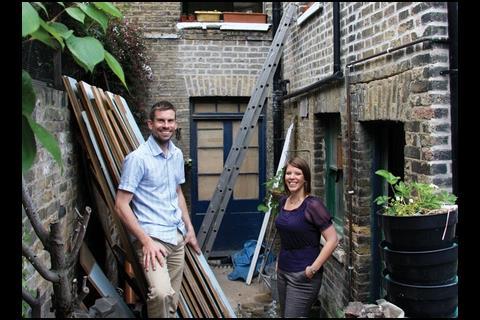
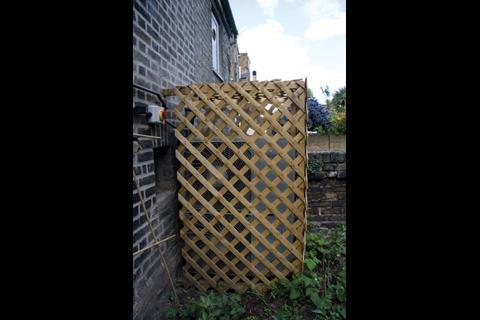

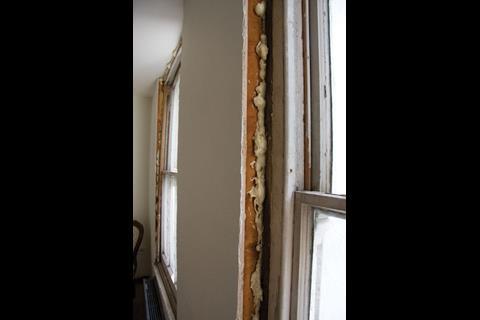
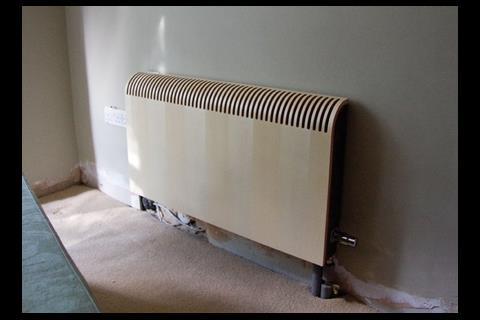

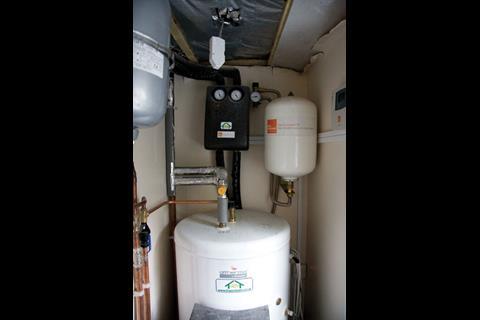

















1 Readers' comment